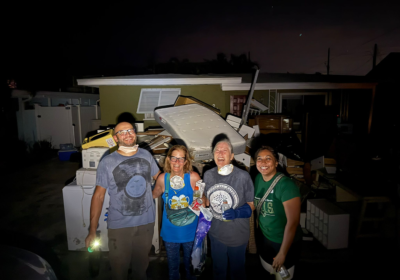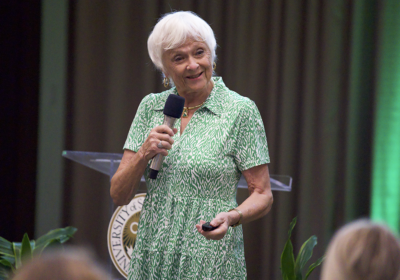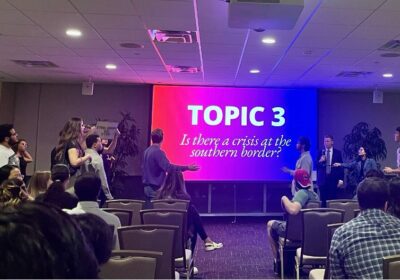Florida poised for big gains in BP settlement

Flames erupt from the Deepwater Horizon oil rig during the 2010 BP oil spill. PHOTO SPECIAL TO THE ORACLE
Years after USF researchers were called to investigate the worst disaster to hit the Gulf of Mexico and found lesions on fish and samples of sand with chemicals connected to BP washing up on the shores of Pinellas County, a settlement has finally been struck between the state and the oil company.
In a $18.7 billion settlement, BP has agreed to give significant funding to Florida, four other gulf states and the federal government to compensate for the devastation caused by the 2010 Deepwater Horizon disaster, in which nearly 134 million gallons of oil spilled into the gulf, according to the Tampa Bay Times.
As reported by the Times, in a settlement reached Thursday, Florida could see more than $3.25 billion over 18 years, $2 billion of which is for economic losses in the tourism and seafood industries.
For penalties under the Clean Water Act, BP will also pay $5.5 billion to the federal government. Though settlements are still ongoing with individual businesses and local governments, it is possible that the Florida Institute of Oceanography (FIO) housed at USF, representing 30 marine science research and education institutions working collaboratively through the Institute, could be eligible to receive future funding from the settlement in attempts to prevent future disasters.
William Hogarth, FIO’s director, said the Institute has been closely involved with researching the effects of the spill since day one.
“We got a call (to respond) almost immediately asking if we could get out to take some samples so (the federal government) could know what was going on and to what extent,” he said.
This settlement may provide much-needed funding, as FIO did not receive the requested $6 million to replace its 45-year-old research vessel — the R/V Bellows. Despite being a priority on USF’s list of legislative funding requests, it did not survive the final version of the state budget.
FIO is home to two research vessels, the Bellows and the Weatherbird II, which have both made numerous research trips to study the 2010 BP oil spill.
Though it is not clear how exactly the money from the settlement will be spent and will be paid over a period of years, Hogarth said FIO planned on using a new state-of-the-art vessel to spearhead several current research projects, including mapping the different animal habitats within the Gulf of Mexico to better prepare for potential oil spills in the future, as well as researching red tides and developing new methods for measuring fish stocks.
“It’s a very important vessel for protecting Florida’s tremendous marine resources, for enabling our faculties in their research and for training the scientists of the future to protect marine biology,” he said.
The preliminary designs FIO submitted to the Florida Board of Governors (BOG) for a new ship depict a 78-foot, three-floor research vessel, and Hogarth said FIO planned to equip the new vessel with up-to-date equipment and electronics for conducting marine research.
While it would be docked at USF St. Petersburg, the ship would be available for use by all the institutions FIO represents, including Florida’s 12 public universities.
“I would describe it as a 2015 version of the R/V Bellows,” he said. “A lot has happened in 45 years.”
Not only does the Bellows lack current technology, but Hogarth said the ship is also slowly deteriorating due to old age and may hinder FIO from being able to effectively respond to future disasters, such as hurricanes or oil spills.
He said ship experts have informed FIO the Bellows is at the end of its life as a research vessel, and it suffers from metal fatigue, faulty electronics and long periods of downtime.
“When something (breaks) now, we can’t even find parts for it,” Hogarth said. “It’s costing us an awful lot to operate it.”
Not operating it at all, however, is also costly to FIO, as the Institute still relies on the ship for chartering research cruises and providing a place for professors to teach their students. According to the new vessel proposal FIO sent to the BOG, the Bellows spends 100 to 150 days at sea each year, producing an annual revenue of $500,000 to $750,000.
While FIO still has the Weatherbird II, Hogarth said FIO cannot rely on the Weatherbird II for all its needs, as the vessel has its own schedule of research cruises, and the cost of operation is double that of the Bellows. He said for now, FIO will have to re-evaluate its use of the Bellows and may need to look into renting other research vessels.
Whatever the solution, Kristen Buck, a chemical oceanographer at the College of Marine Science at USF, said having a research vessel available is vital for students and researchers involved in marine studies.
“There is no comparison to going to sea and doing the work,” she said. “(Research vessels) are irreplaceable. There’s nothing like them out there.”






